Our friend and occasional savior Sophie Avernin was in town this past weekend for this year’s Culinaria Mexicana gala and I finally had the opportunity to ask her a question I’d been marinating on since long before we moved: How does Mexico view Oaxaca?
I’ve long thought that the E.U. and the U.S.A. are much more alike than people realize, largely for one particular reason: the states that make up the U.S. more or less hate each other, much like how the countries that make up the E.U. are in a perpetual state of competition, feuding, and low-level sabotage. Americans have very particular and largely negative opinions about New York City and New Yorkers, just as the average New Yorker is sure, deep down in their bones, that anyone who lives anywhere else in the United States is pretty much a total moron. It’s one of the reasons things in the U.S. are now so tenuous. Each state was already effectively its own country, with its own laws, courts, constitution, military, schools, hospitals, prisons, and values, but they were united by a strong federal government. With that federal government being deliberately eroded, and segments of the country drifting further and further apart culturally and politically, it’s not hard to envision a near future in which the United States is no longer united.
I wondered, is this how things are in Mexico? Oaxaca is culturally rich and environmentally stunning, but it’s also rural and poor. How does Oaxaca fit into the wider tapestry of the country of Mexico? What do Mexicans who aren’t Oaxacan think about Oaxaca?
“How does Mexico view Oaxaca?” I asked Sophie. “Do they view this place as being backward and rural, like some people view many states in the U.S.? Or do they view it as being sort of alternative and artsy?”
Sophie didn’t even need to reflect on the question. “It’s said Mexico has three jewels,” she replied. “One is Puebla, and another is Mérida. But the greatest and most famous is Oaxaca.”
Over time I’ll cover all of the reasons Oaxaca is, to mirror Sophie’s flattering description, jewel-like. Today’s entry offers a glimpse of Oaxaca’s public art, which is varied and stunning and appears not just in the city of Oaxaca de Juárez but also in virtually every pueblo we’ve had an opportunity to visit.
The first time we visited Oaxaca we had a chance to wander through Jalatlaco (ha-lat-LA-co), one of Oaxaca de Juárez’s better-known barrios. It’s a small, charming, and relatively peaceful neighborhood with lots of third-wave coffee shops and small independently owned stores. As you might expect, that’s led to quite a lot of street art.
This Impressionist-style mural adorns the entire side of a building in Xochimilco (so-chi-MIL-co), another of Oaxaca de Juárez’s most beloved neighborhoods. This building lies on a small side street with an ancient aqueduct on its west side, which sits next to (or on top of!) houses and apartments.
This mural is without a doubt my favorite in Oaxaca. It lies on a rather nondescript corner of the pueblo of San Antonino Castillo Velasco just down the block from Manos Que Ven, the sculpture workshop of José Garcia and his family. The image portrays an Indigenous woman combing her hair, which is the very land itself. I love both the symbolism and the artistry.
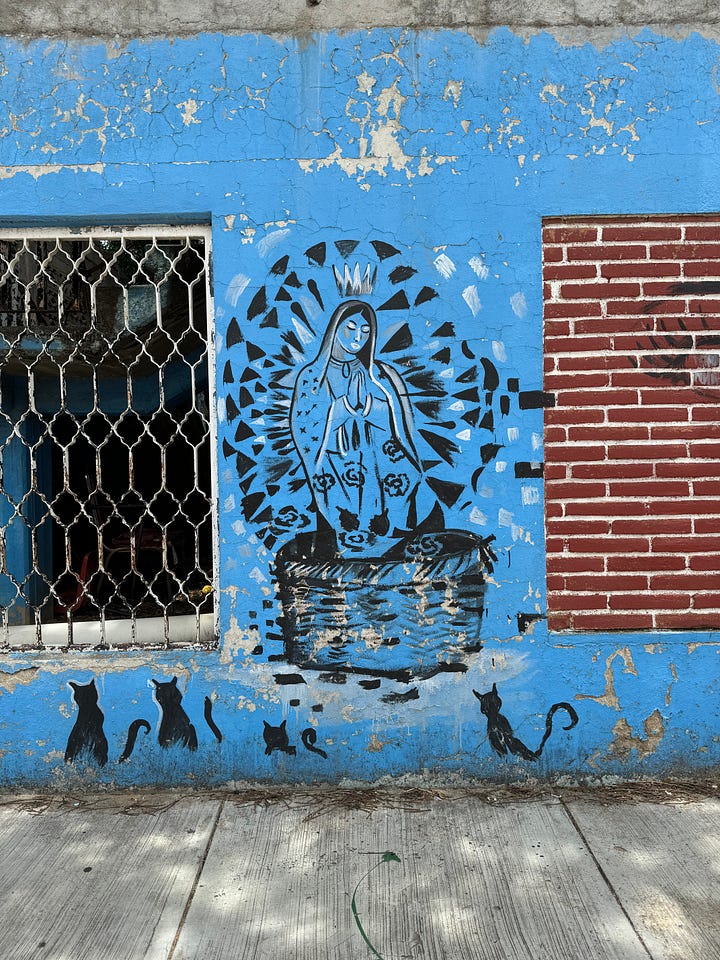
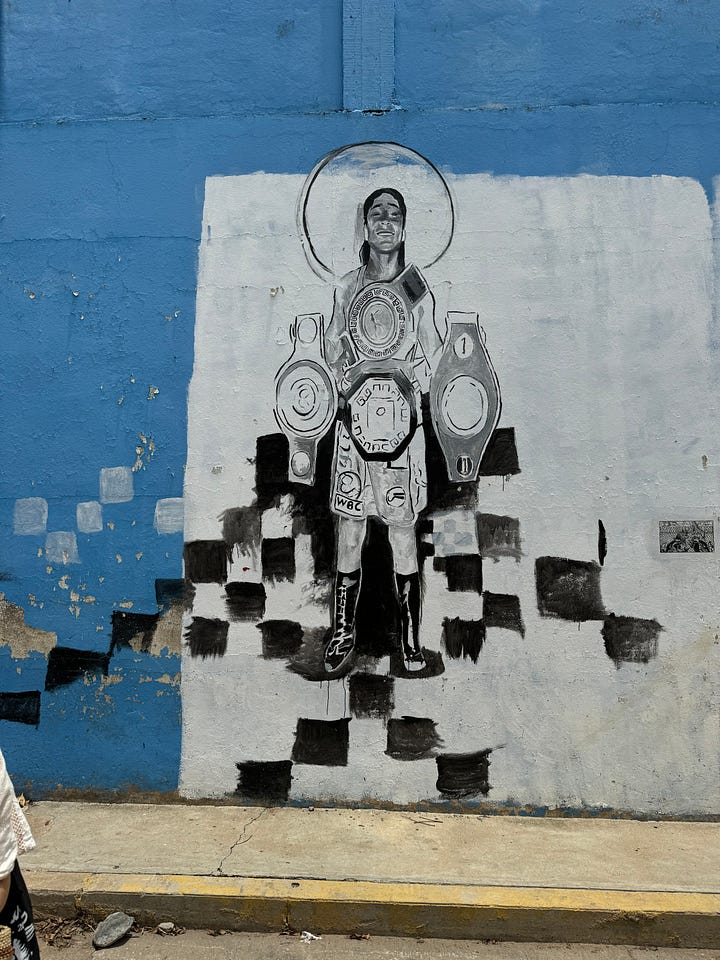
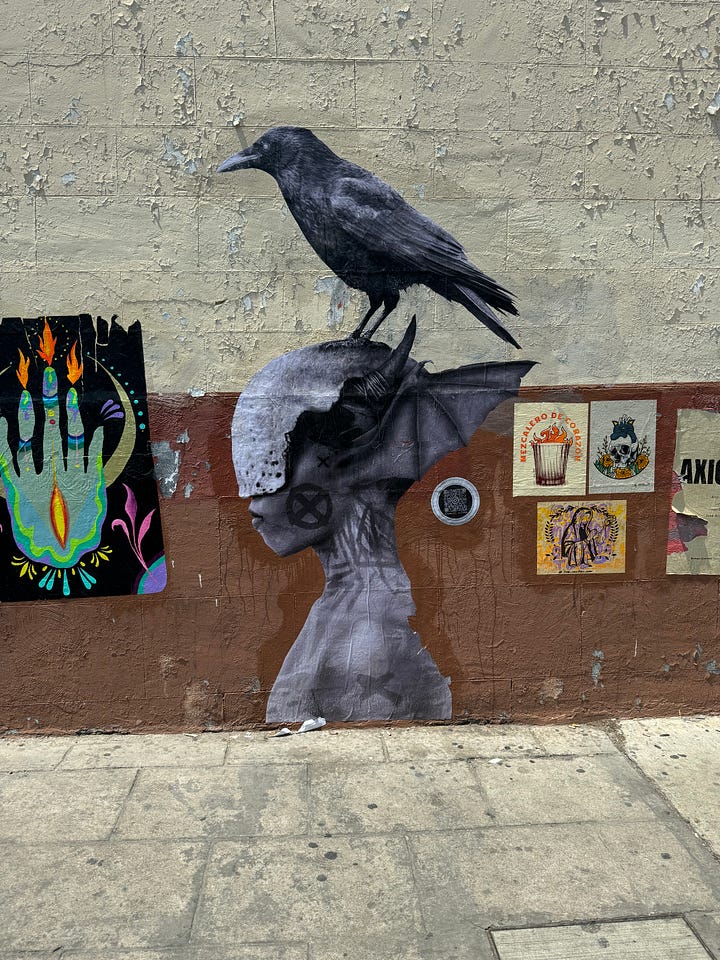
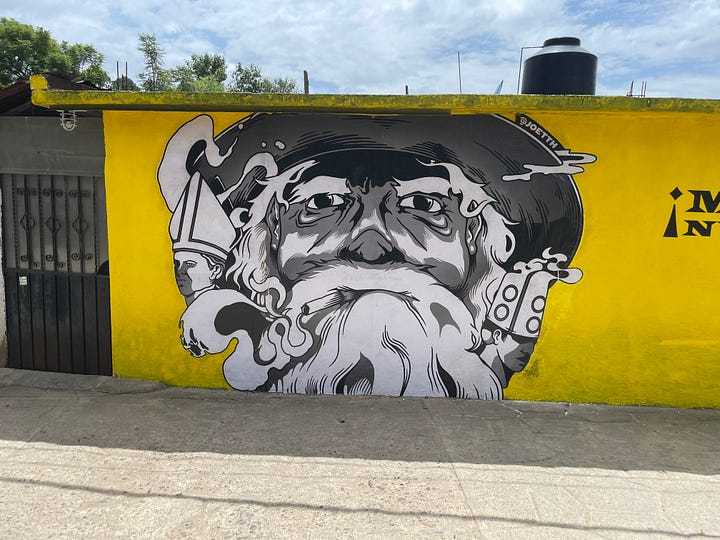
Street art in Oaxaca can be authorized and more-or-less permanent, authorized and temporary, or put up completely without permission. Sometimes graffiti artists will spray paint directly onto the side of a building. That type of art is what’s shown in the photos of the Virgen de Guadeloupe surrounded by cats and the Indigenous boxer holding title belts.
What’s more common is to see art that’s been printed on a type of paper that’s then shellacked to the side of a building. The city seems fairly tolerant of this type of guerilla street art but between the sun, heat, and rainy season it shreds and degrades fairly quickly. When that happens, or perhaps if a building owner gets tired of the typically charming vandalism, city officials will send out teams of people with pressure washers and paint scrapers to take down the art. The third image here, showing the woman with the bird on her head, is that variety of art. The fourth image of a man smoking, also made from paper, was put up in our town for Día de Muertos and was only intended to live for a short time. It was replaced by a new mural in the same location the next year.
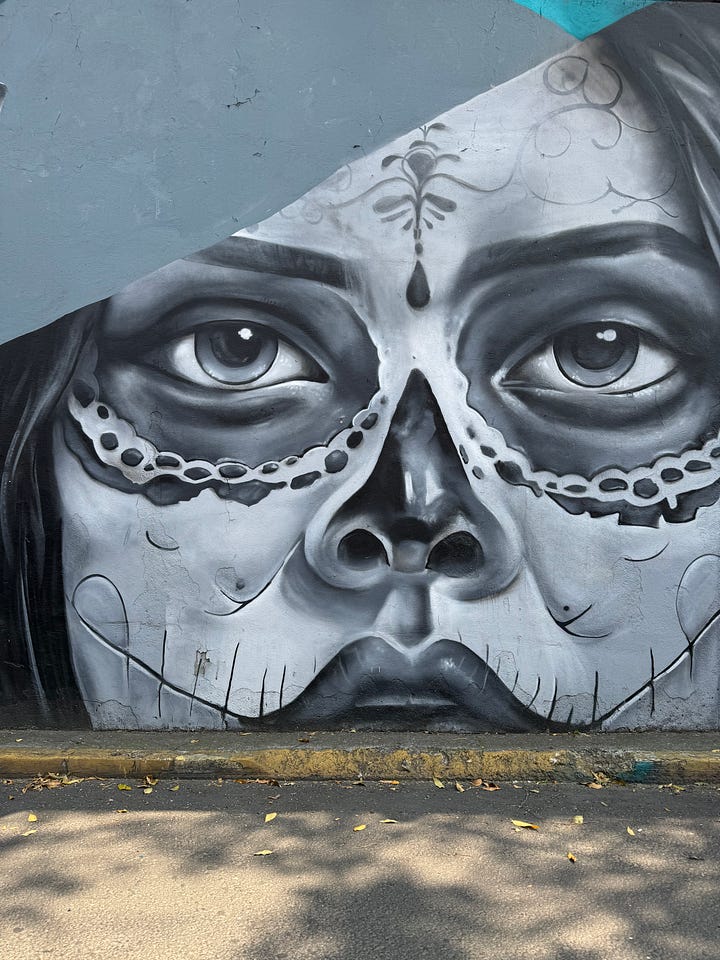
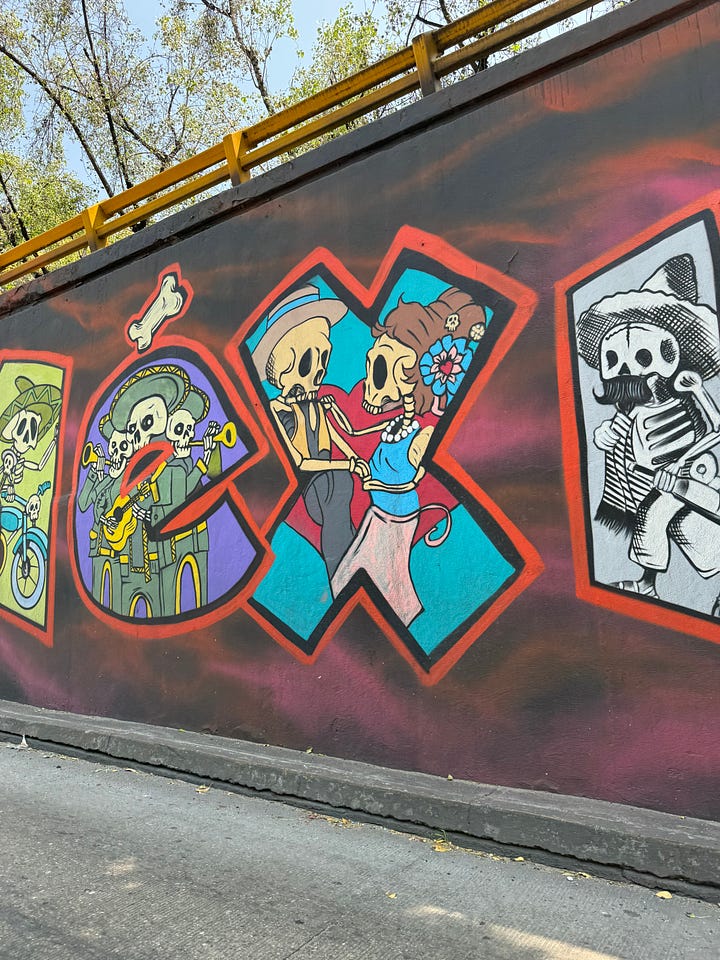
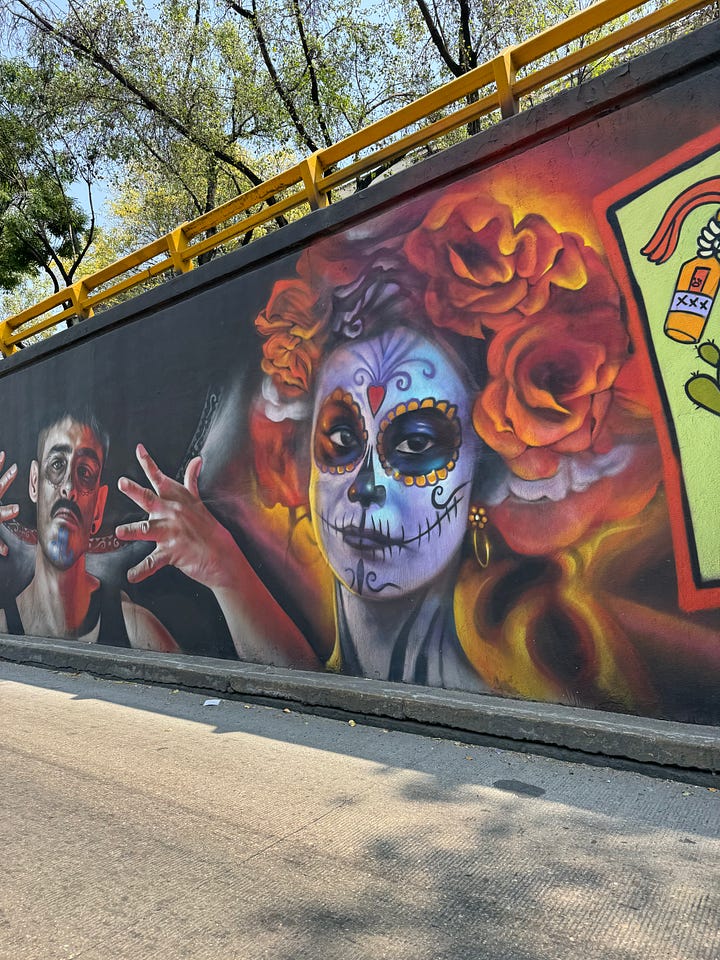
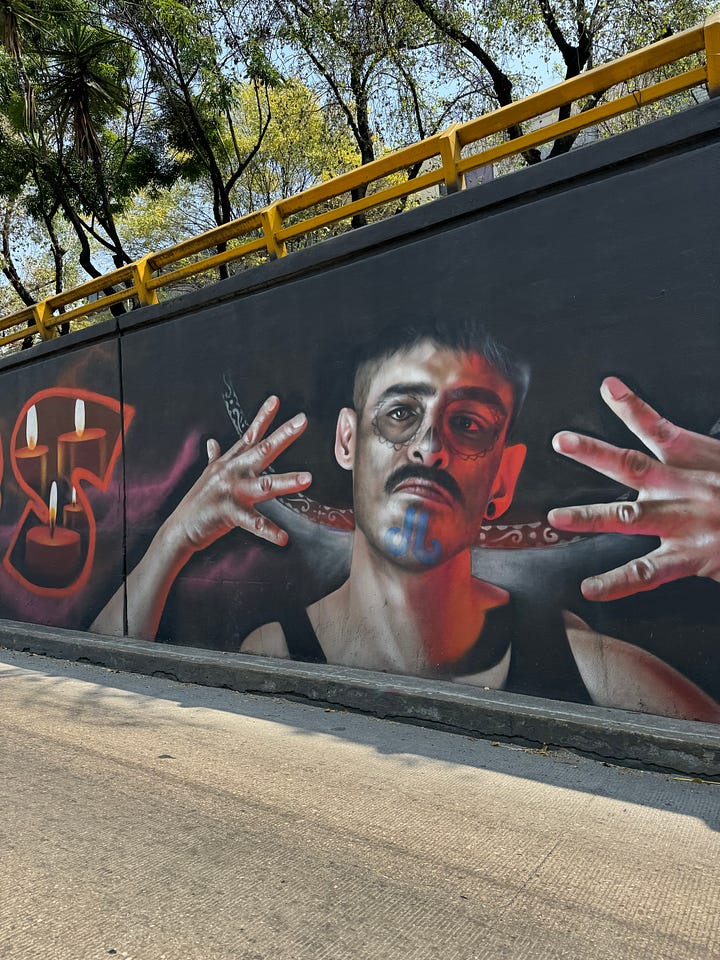
Murals appear everywhere in Oaxaca but artists do love high-visibility locations. These pieces were painted on the side of a highway that carves its way through the northern part of the city. Art in Oaxaca often makes use of imagery associated with death and the holiday Día de Muertos, but the expression of that art can range from being cute and cartooney to hyper-realistic.
I rather like the mural covering this building, but it is slightly ruined by the word “Comex” appearing in the bottom right corner. Comex is an extremely successful and prominent Mexican paint company and I’m guessing they commissioned and paid for this work. Knowing that this is, if not an ad, at least a type of sponsored content makes it less nice.
This mural also acts as a bit of a portent about how Oaxaca is changing. The highway connecting it to Mexico City only opened in 1994 and it’s only been in relatively recent years that tourism has truly begun to boom here. Oaxaca is beloved, but it was also neglected for a very long time. Seeing a brand like Comex pay for a mural like this is a sign that Oaxaca is becoming more commercialized and that more changes are on the way.

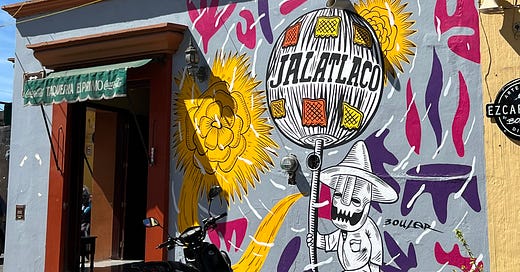



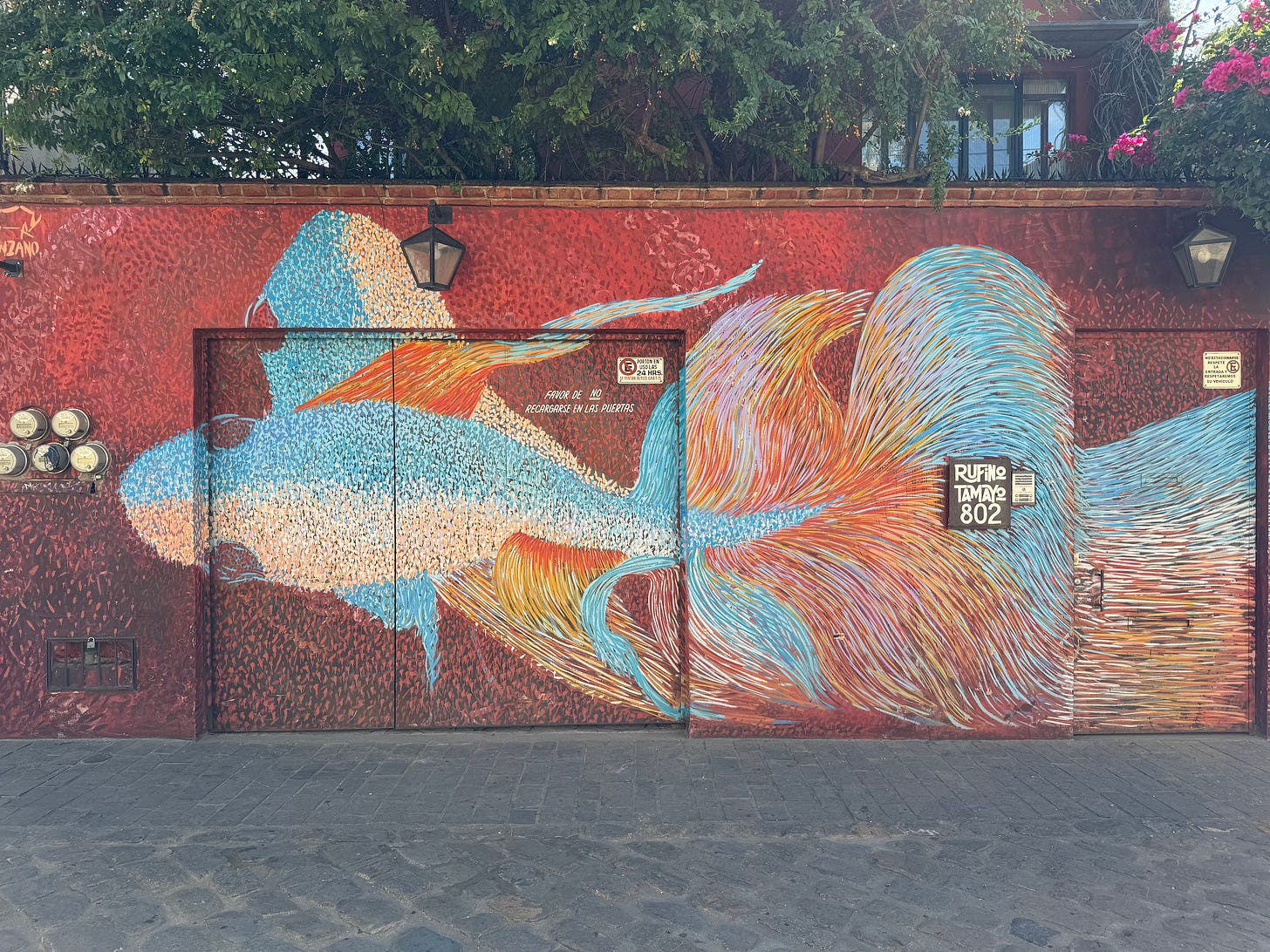
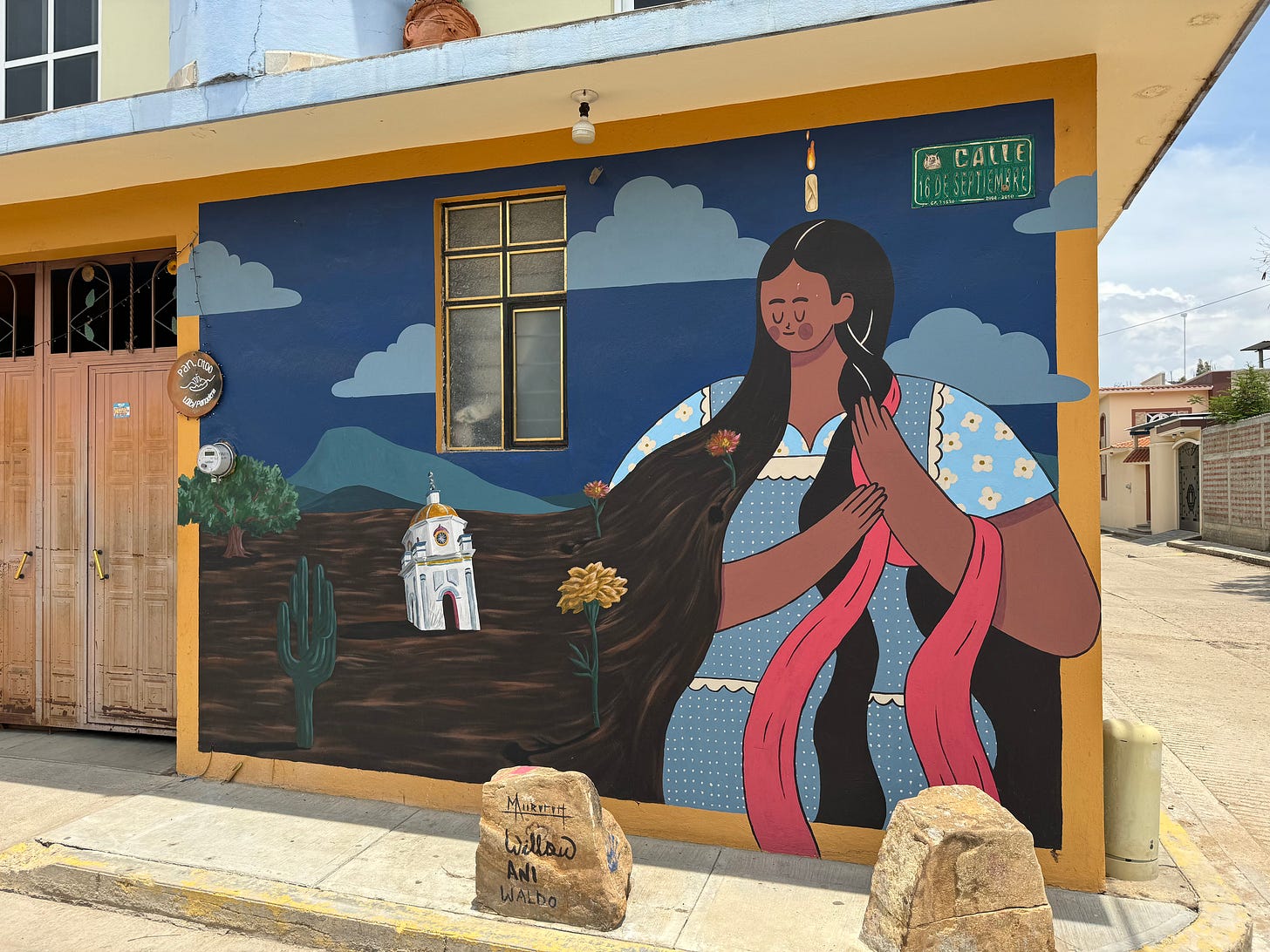
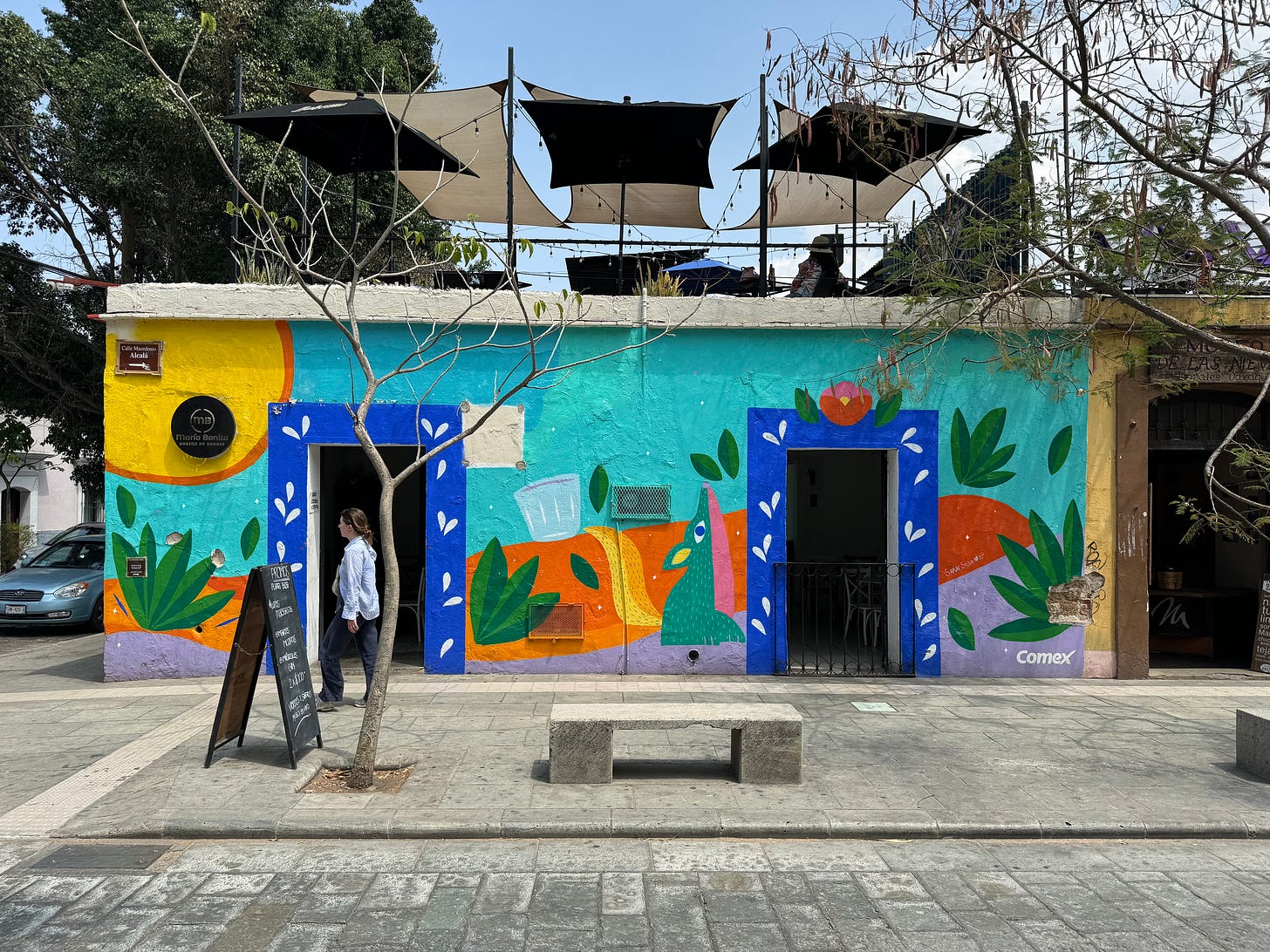
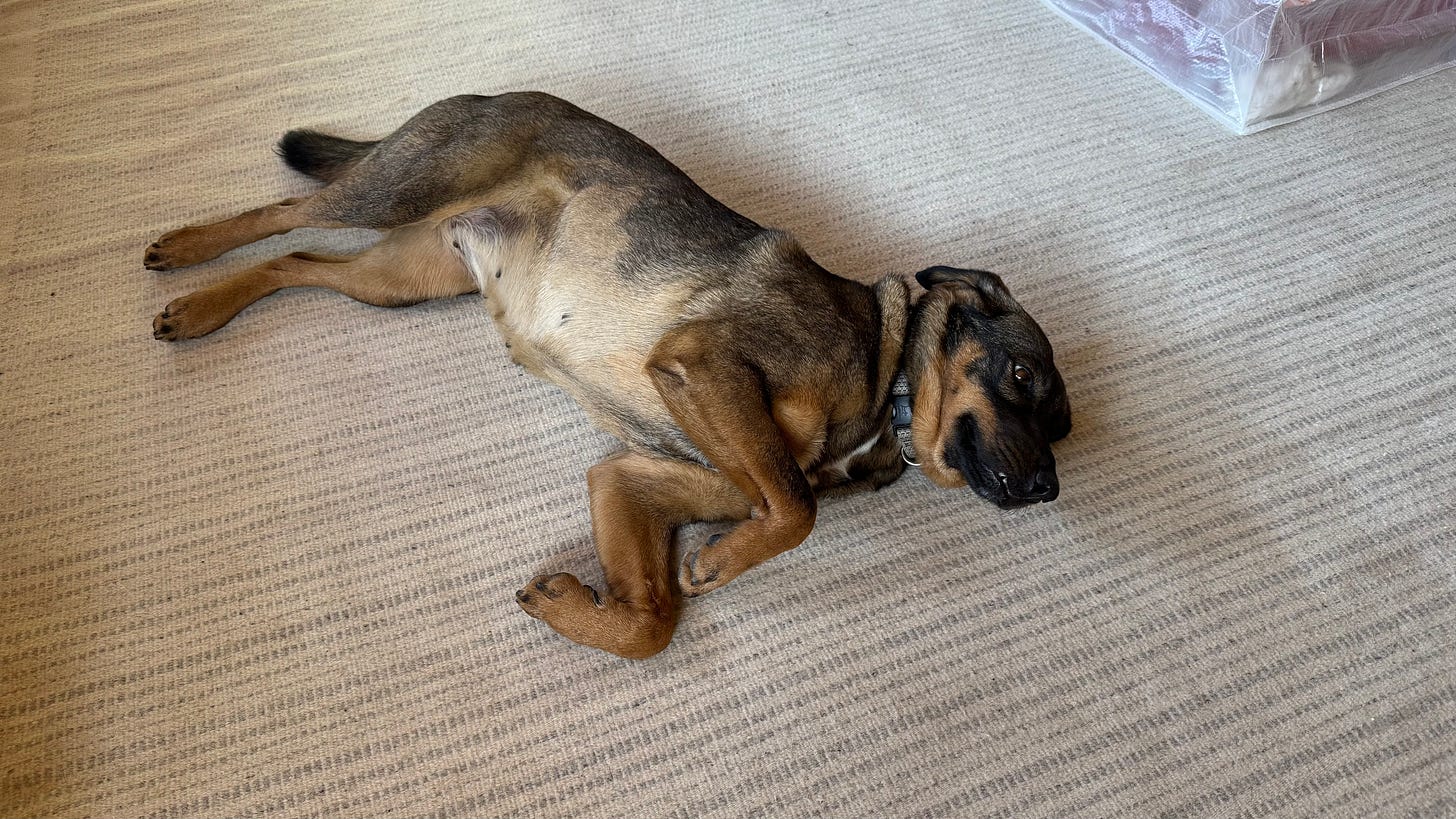
Beautiful! Mexican art is my favorite, thanks for sharing the colors of Oaxaca! My favorite is the impressionist mural with the whales!
These are beautiful! There are some incredible murals here in Mexico City as well. I can walk a few blocks in any direction from my apartment and see a bunch of them anywhere I go.